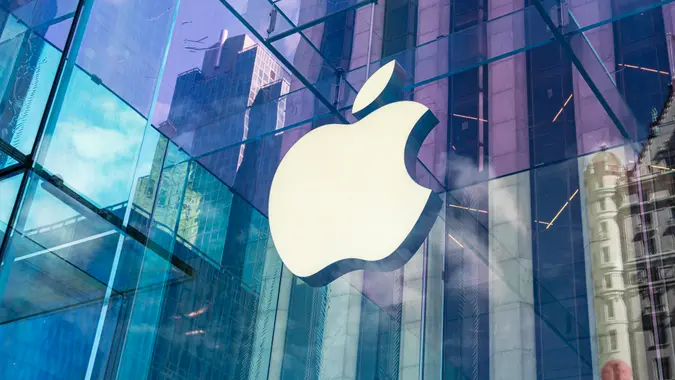I Asked ChatGPT What the Big Beautiful Bill Means for My Stock Investments, Here’s What It Said

Commitment to Our Readers
GOBankingRates' editorial team is committed to bringing you unbiased reviews and information. We use data-driven methodologies to evaluate financial products and services - our reviews and ratings are not influenced by advertisers. You can read more about our editorial guidelines and our products and services review methodology.

20 Years
Helping You Live Richer

Reviewed
by Experts

Trusted by
Millions of Readers
The One Big Beautiful Bill Act was signed into law on Independence Day. The sweeping legislation has massive implications on everything from taxes and social welfare programs to environmental policy and immigration enforcement.
However, I was most concerned with how it could impact my stock investments and what I should do about it. So, naturally, I asked ChatGPT — below is what it said.
First, an Explanation of the Legislation
The artificial intelligence (AI) platform opened with an explanation of the bill’s key provisions, citing sources like Congress.gov and Investors Business Daily to generate the following.
- Major tax package: $4 trillion to $4.5 trillion in tax cuts — permanently extends 2017-era tax rates, includes new deductions (tips, overtime, SALT up to $40K), expanded child credit and business or pass-through incentives.
- Healthcare and welfare cuts: Nearly $1.2 trillion in Medicaid reductions (work requirements, eligibility limits), $186 billion SNAP cuts, $307 billion student loan reductions.
- Energy and climate: Clean energy credits trimmed, solar and wind gradually phased out; nuclear and geothermal credits extended.
- Defense, immigration and law enforcement: $150 billion boost to military, $150 billion on border control (ICE, wall, removals), expanded FCC auction authority.
- Housing incentives: Affordable Housing Credit permanently increased, Opportunity Zones extended, mortgage interest deduction restored.
- Judicial and federal service changes: Supreme Court ethics code, “at-will” options for new federal employees, FERS contribution hikes.
- Deficit increase: CBO projects $2.8 trillion to $3.4 trillion added to deficits over 2025 to 2034; debt ceiling rose by $5 trillion to accommodate.
- Coverage losses: Approximately 10.9 million more uninsured by 2034 (due to Medicaid or SNAP changes).
How Stock Investments May Be Affected
Next, ChatGPT got to the question at hand, breaking down potential impacts on my stock investments into two broad categories.
Potential Winners
- Large-cap and low-tax sectors: Broad tax relief could boost corporate earnings, especially in consumer discretionary and industrials.
- Housing and construction: Enhanced LIHTC and mortgage interest deductions may lift REITs and construction firms.
- Defense and aerospace: $150 billion military funding bump benefits major contractors.
- Telecom or infrastructure: Restored FCC auction authority (800 MHz spectrum) supports telecom and 5G providers.
Sectors at Risk
- Healthcare and social services: Medicaid and SNAP cuts may depress healthcare insurers and providers reliant on government funding.
- Clean energy and tech: Trimmed renewable incentives could hinder solar or wind firms; AI regulation moratorium was dropped — wheel spin on tech-related provisions.
- Financials and bonds: Larger deficits might push interest rates higher — negative for rate-sensitive stocks and growth valuations.
Let’s Get Tactical
Without me even asking for actionable advice, my on-again-off-again AI investment advisor closed with the following table titled, “Tactical Portfolio Considerations.”
| Strategy | What to Do |
| Shift into advantaged sectors | Consider defense, telecom, housing and large-cap tax beneficiaries. |
| Trim vulnerable holdings | Reevaluate reliance on Medicaid or SNAP-supported healthcare, green energy. |
| Hedge against rising rates | Explore floating-rate assets or defensive sectors like staples and utilities. |
| Watch policy triggers | Inflation, Fed moves and midterm election messaging could shift market flows. |
 Written by
Written by  Edited by
Edited by 

























